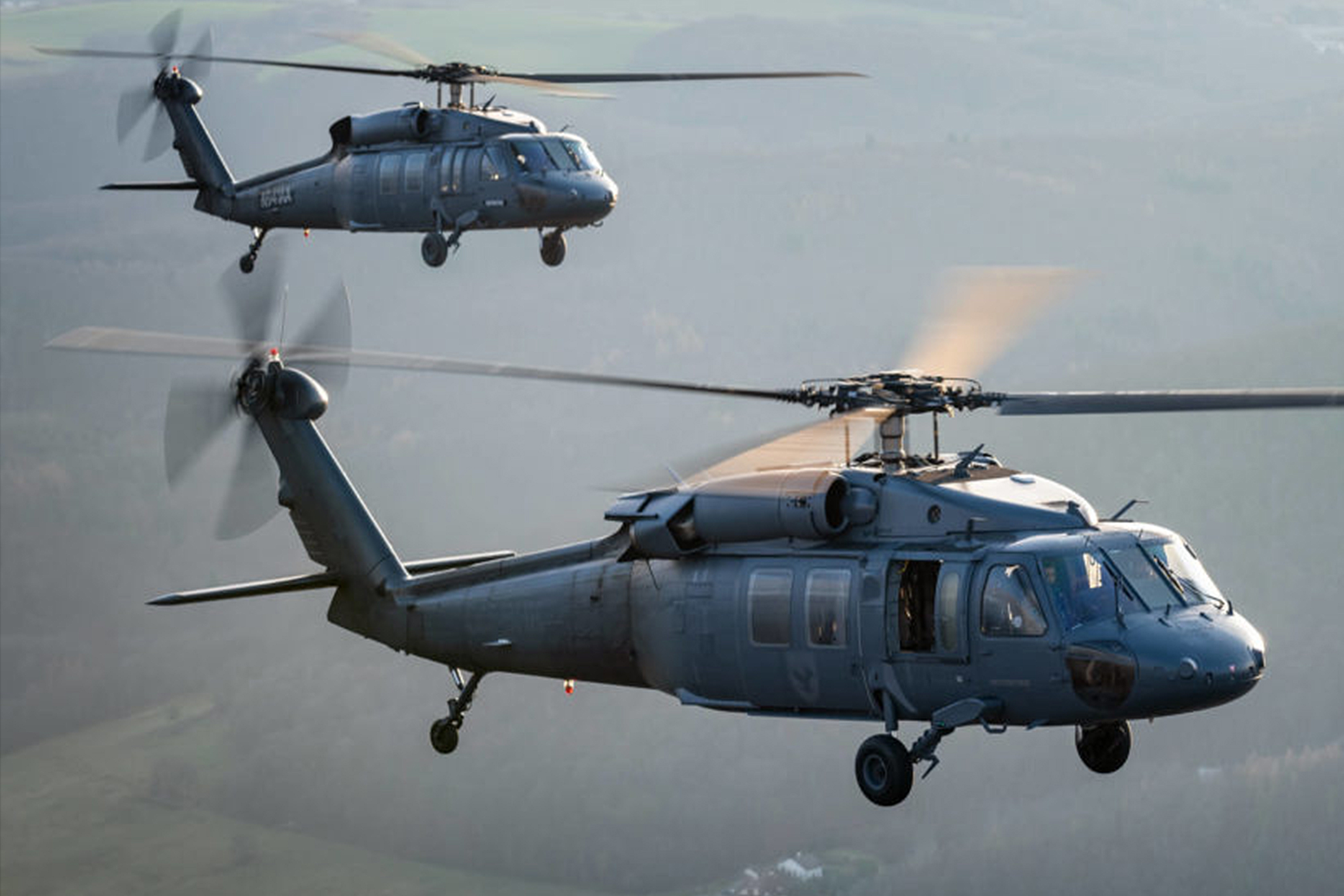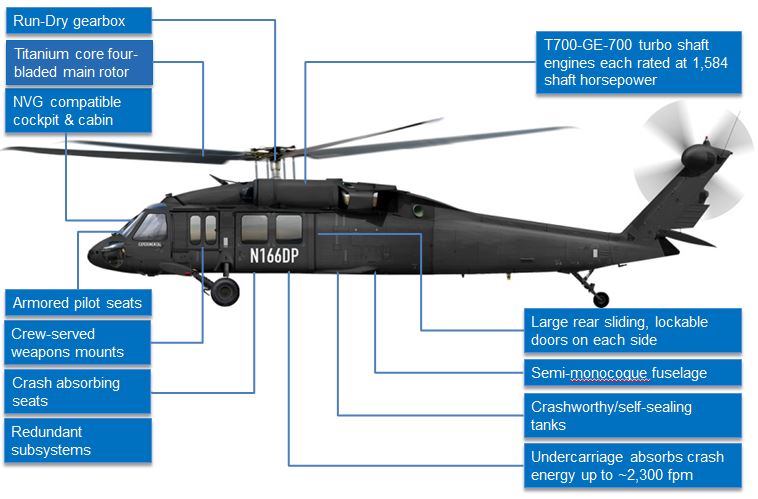Recognizing the Engineering Quality Behind the UH 60 Helicopter
Recognizing the Engineering Quality Behind the UH 60 Helicopter
Blog Article
UH-60: Advancements in Modern Helicopter Layout
The UH-60 helicopter stands as a benchmark in modern-day aviation, showcasing considerable advancements in design and technology that provide to the developing needs of armed forces operations. As we explore the advancement and key advancements of the UH-60, it ends up being important to think about just how these advancements affect not just present applications but additionally the future landscape of helicopter design.

Evolution of the UH-60
The development of the UH-60 Black Hawk helicopter stands for a significant turning point in aerospace design and army air travel. Presented in the late 1970s, the UH-60 was developed by Sikorsky Aircraft to meet the USA Military's requirement for a functional energy helicopter qualified of performing a range of goals. Its style emphasized rate, maneuverability, and resilience, setting brand-new requirements for functional efficiency.
The UH-60 features a distinct four-blade rotor system, which improves lift and security, allowing it to operate effectively in varied atmospheres. Its airframe is constructed from sophisticated composite materials, adding to a reduction in weight while maintaining structural honesty. The helicopter's style also integrates improved the rules of aerodynamics, which improves gas performance and enhances array.
Throughout the years, the Black Hawk has actually undergone numerous upgrades to improve its abilities, including boosted engines, advanced trip control systems, and modular systems for very easy upkeep and flexibility. The helicopter's ability to do objectives ranging from army transport to medical discharge has strengthened its duty as a backbone of united state armed forces operations. The UH-60 Black Hawk stays an archetype of how development in helicopter style can substantially impact armed forces effectiveness and functional versatility.
Advanced Avionics Systems
Innovations in avionics systems have actually transformed the capabilities of modern-day helicopters like the UH-60 Black Hawk, boosting operational effectiveness and situational awareness (UH 60). The combination of sophisticated avionics enables boosted trip, navigating, and communication monitoring, making the UH-60 a lot more flexible in varied goal accounts
One of the key functions is the sophisticated electronic cabin, which utilizes multifunction displays that offer real-time data, guaranteeing pilots have immediate access to critical trip info. This streamlining of information reduces pilot workload and boosts decision-making processes during complicated operations. In addition, the consolidation of general practitioner and inertial navigating systems makes it possible for specific positioning and route planning, boosting objective execution in difficult settings.
Additionally, progressed avionics systems boost interaction capabilities through safe data web links and voice communication systems, permitting seamless sychronisation with ground pressures and various other aircraft. The assimilation of automatic flight control systems additionally adds to improved stability and control, especially in negative weather or during low-altitude maneuvers.
Engine and Efficiency Enhancements
Engine efficiency in modern helicopters has actually taken a significant jump ahead, driven by technologies that improve reliability, power, and performance. At the forefront of these innovations is the fostering of more powerful turboshaft engines, particularly those utilizing advanced materials and technologies that enable greater temperature over at this website tolerances and boosted drive abilities. The UH-60 Black Hawk, for example, utilizes the T700-GE-701C engine, which features a dual-channel, full-authority electronic engine control system. This system enhances performance while optimizing gas usage and decreasing upkeep demands.
Additionally, the integration of engine wellness monitoring systems permits real-time diagnostics and predictive upkeep, considerably boosting functional dependability. These systems not only alert staffs to potential concerns before they come to be essential but also facilitate extra reliable maintenance organizing, thereby decreasing downtime.

Products and Structural Innovations
Current advancements in products and architectural design have reinvented modern helicopter construction, improving both performance and longevity. The introduction of advanced composite materials, such as carbon fiber strengthened polymers, has actually substantially reduced weight while preserving architectural integrity. This shift not just improves fuel performance yet additionally increases payload capacity, enabling helicopters like the UH-60 to execute even more diverse goals.
Furthermore, developments in aluminum alloys and titanium parts have actually added to improved resistance to deterioration and tiredness, prolonging the lifespan of important airframe aspects. The calculated use these materials has actually led to a reduction in upkeep needs and improved overall functional preparedness.

In addition, the browse around this web-site integration of computer-aided design (CAD) and additive manufacturing technologies has made it possible for a lot more lightweight frameworks and intricate geometries, maximizing the wind resistant efficiency of helicopter styles. These improvements facilitate fast prototyping and production, permitting manufacturers to respond quickly to developing objective requirements.
Safety and Survivability Attributes
Safety and survivability features in modern-day helicopter layout have become vital, showing the raising needs for goal efficiency in difficult environments. The UH-60 Black Hawk, a significant example, integrates innovative innovations to enhance staff and guest protection.
The helicopter additionally utilizes a ballistic protection system, that includes armored crew seats and vital systems shielding, reducing vulnerability to tiny arms fire and shrapnel. Improved situational link recognition is achieved via advanced avionics and sensor technologies, allowing pilots to detect and prevent hazards efficiently.
In addition, the integration of redundancy in essential systems-- such as twin engines and multiple trip control channels-- makes sure ongoing operation even if one system falls short. The UH-60 is outfitted with sophisticated emergency flotation gadgets, improving survivability in water touchdowns. Collectively, these features not only improve the security of workers however also increase goal success prices in aggressive environments, demonstrating the commitment to quality in helicopter design.
Verdict
The UH-60 helicopter represents a considerable advancement in modern aeronautics technology, including innovative materials, advanced avionics, and durable security attributes. Its evolution shows a dedication to enhancing efficiency and functional performance while ensuring pilot and team survivability. The assimilation of lightweight composites and progressed navigating systems emphasizes the helicopter's flexibility in numerous army missions. Generally, the UH-60 offers as a standard for future growths in helicopter design, embodying strength and versatility in modern army procedures.
The UH-60 helicopter stands as a criteria in modern aviation, showcasing significant advancements in layout and modern technology that provide to the developing needs of armed forces procedures. As we explore the development and vital advancements of the UH-60, it comes to be important to consider exactly how these developments affect not just present applications but also the future landscape of helicopter style.
Presented in the late 1970s, the UH-60 was designed by Sikorsky Aircraft to fulfill the United States Army's demand for a versatile energy helicopter capable of carrying out a range of objectives. The UH-60 Black Hawk stays a prime example of exactly how development in helicopter layout can significantly affect armed forces effectiveness and functional adaptability.
On the whole, the UH-60 offers as a criteria for future growths in helicopter layout, personifying resilience and adaptability in modern armed forces procedures.
Report this page